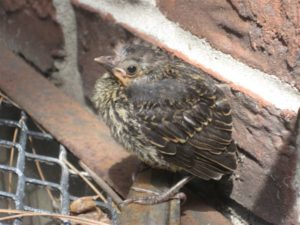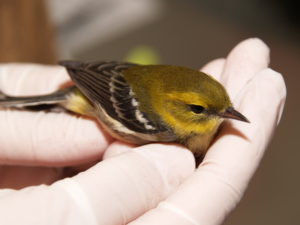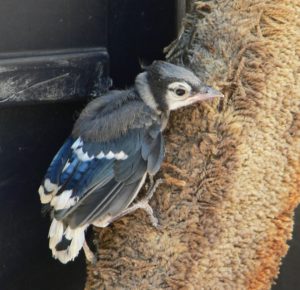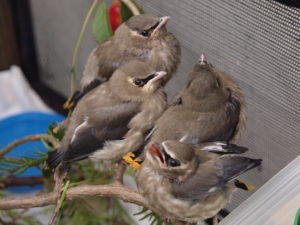If you found fledgling songbird
If the fledgling bird is bright and alert, hops well and flaps its wings, and tries to get away from you, it is probably okay. Monitor from a distance to see if the parents are coming down to feed it — watching from inside is even better. Most birds will feed their babies every 10-30 minutes, but you should watch for at least 2 hours — especially if you already contained the baby before reading this and have just put it back. Some birds, like robins and red-winged blackbirds, can be very vocal and bold about protecting their babies when you are around. Others, like starlings or grackles, may be a bit more secretive. Watch carefully, but make sure you’re not so close you’re scaring the parents off. If after 2 hrs there is no sign of the parents, contact a wildlife rehabilitator for advice.
What if the fledgling is in an unsafe spot?
If the fledgling is in an open area with nowhere to hide (an open lawn, a sidewalk, a parking lot or driveway), it’s okay to scoop it up and move it to a spot with a bit more shelter. It may help to cover it with a towel or scarf to catch it. Take it to a bush, low tree, or flowerbed nearby. At this stage baby birds are mobile, and their parents are used to looking around for them and communicating by calling back and forth. Make sure not to move them too far — within easy visual distance, or not more than about 50 feet.
Even in the most urban areas, there is usually a flower planter, a hedge, or a patch of weeds in the corner of the alley that is a suitable spot for a fledgling bird to hide.
Monitor from a distance for parents coming back to feed the baby. Most birds will feed their babies every 10-30 minutes, but you should watch for at least 2 hours — especially if you already contained the baby before reading this and have just put it back. If there is no sign of the parents after 2 hours, or if there is literally nowhere safe to put the baby bird, contact a wildlife rehabilitator for advice.





